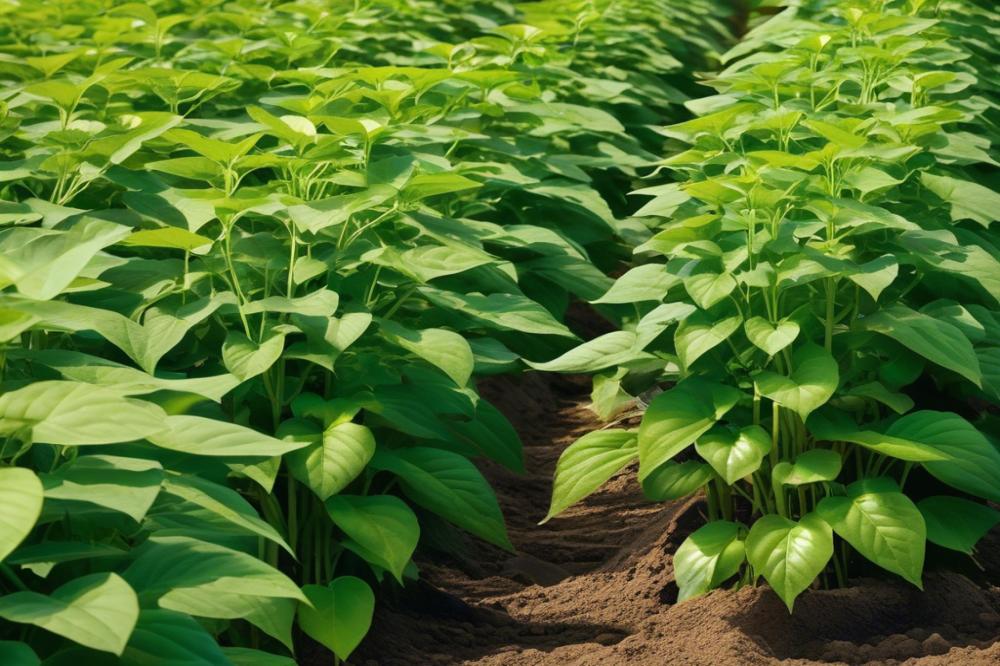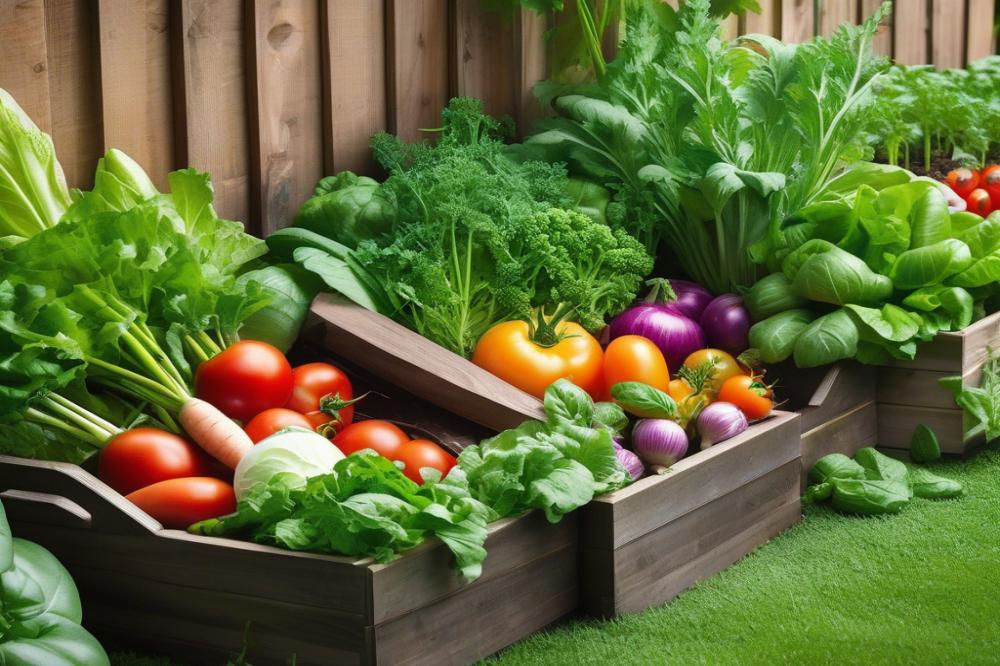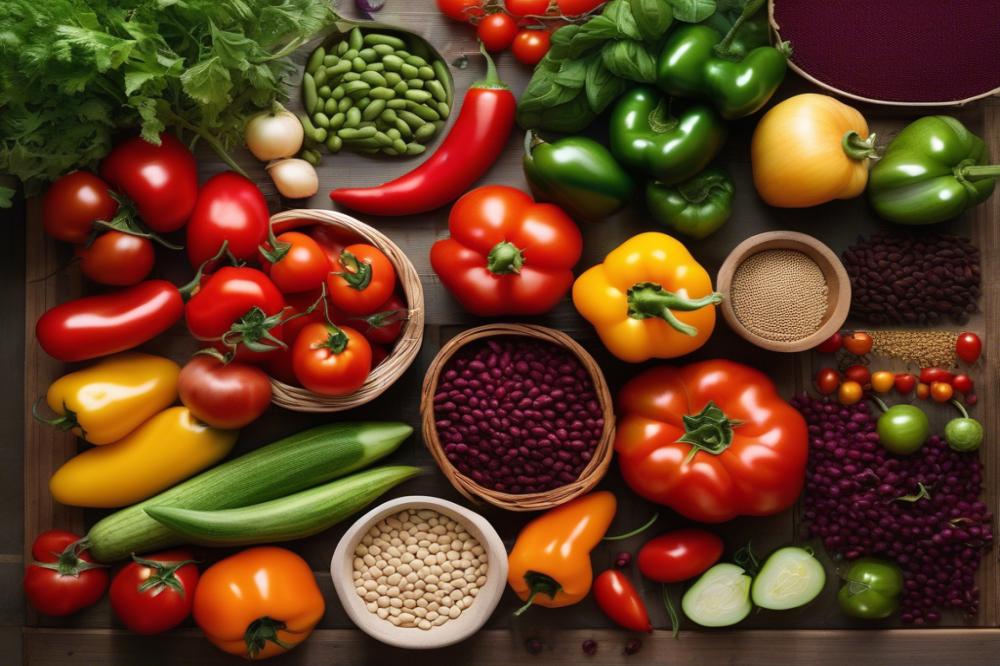The Secrets to growing soybeans in Your home garden
growing soybeans is an excellent way to enhance your home garden. These legumes are not only nutritious but also versatile. They can be used in a wide range of dishes, making them a valuable addition to your diet. Additionally, the plants play a key role in improving soil health by fixing nitrogen, which benefits future crops.
When it comes to soybean varieties, gardeners have a plethora of options. From edamame to traditional yellow soybeans, the choices suit various culinary needs and climates. Each type has its unique characteristics, which can influence taste and texture. Caring for these plants requires a bit of knowledge about planting tips and suitable conditions.
Understanding cultivation techniques is essential for a successful harvest. Proper soil preparation, including testing pH levels, is critical. Healthy soil fosters strong growth. Ongoing garden maintenance, like watering and weeding, should not be overlooked. As with any crop, pest control methods are vital. Organic gardening can help keep unwanted insects at bay without harmful chemicals.
Crop rotation is another method that can benefit soybean plants and your overall garden. By rotating crops, you can reduce disease and nutrient depletion. Harvesting soybeans requires patience and readiness to gather them efficiently. Knowing when to pick can greatly affect flavor and quality.
In the world of gardening, soybean nutrition is significant. These plants are rich in protein and can contribute to a balanced diet. By learning and applying effective gardening techniques, you can make the most of your efforts in the garden. Embrace the challenges and rewards of cultivating this valuable crop in your home garden.
Growing Soybeans: Understanding soybean varieties


For home gardeners, choosing the right soybean varieties can make all the difference. Popular options include the ‘Edamame’ cultivar, which is harvested young and eaten fresh. Another favored type is ‘Black Soybeans,’ known for their nutty flavor and high nutritional value. These varieties can provide delicious snacks and dishes for the entire family.
Selecting the right soybean type involves considering climate and soil types. Most soybeans thrive in warm temperatures, ideally between 70°F and 95°F. Remember, frost can be harmful. Therefore, a frost-free growing season is crucial. If your garden soil is sandy or loamy with good drainage, many soybean varieties will flourish.
Nutritional Benefits
Different soybean varieties offer various nutritional advantages. ‘Edamame’ is rich in protein and fiber, making it a great plant-based option. Its vibrant green pods are not only delicious but also packed with vitamins. On the other hand, black soybeans provide a unique boost with their antioxidants, which can support overall health.
Observing garden maintenance techniques will help maximize yields for any variety you choose. Making sure to prepare the soil well can lead to better growth. Additionally, crop rotation keeps the soil healthy and reduces pest issues. Identifying and managing pests is vital for keeping plants safe. Using organic gardening methods can help control these pests naturally.
When it’s time for harvesting soybeans, knowing when to pick is important. Edamame should be harvested while still green, whereas black soybeans are harvested once they’re dry and mature. Each type requires specific gardening techniques to thrive. Proper timing and care ensure your efforts lead to a fruitful harvest.
Soil Preparation for Soybean Cultivation


Soil quality plays a crucial role in the growth of soybeans. Healthy soil provides the necessary nutrients and support for strong plants. Poor soil can lead to stunted growth or disease, negating all your hard work. For the best results, focus on achieving the right soil texture and composition.
Certain soil types are more suitable for soybean varieties than others. Loamy or sandy loam soils with good drainage usually work best. These types allow for easy root development and nutrient absorption. Aim for a pH level between 6.0 and 7.5, which is optimal for soybean nutrition. You can test your soil using a simple kit to determine its pH and nutrient levels.
Amending your soil is vital if it lacks organic matter. Adding compost or well-rotted manure can significantly improve soil fertility. Be sure to till these amendments into the soil before planting. This increases the amount of organic matter, which enhances water retention and encourages beneficial microbes. Mix in a balanced fertilizer if necessary to boost nutrient content.
Regular garden maintenance helps keep the soil healthy. Avoid compacting the soil by walking on it too much. When planting, consider using no-till methods to maintain the soil structure. Crop rotation is another effective technique. It reduces soil depletion and helps manage pests naturally over time.
As your soybeans grow, watch for any signs of pest problems. Implementing integrated pest control methods is often more effective than harsher chemical solutions. Keeping your garden free of weeds will also lessen competition for nutrients.
Throughout the growing season, return to your soil type and pH levels. Regular checks will help you understand how changes affect your plants. With proper soil preparation, the potential for a bountiful harvest increases. Embrace these practices, and you’ll find gardening success comes more easily.
Planting Tips for Successful Growth


Timing plays an essential role when it comes to planting soybeans. The best time to sow seeds is after the last frost in spring. Warm soil is vital for seed germination. Aim for soil temperatures of at least 55°F (13°C). This ensures strong plants will develop right from the start.
Methods for planting can vary. Some gardeners prefer direct sowing while others might start seeds indoors. Each technique can be effective depending on your local climate. If starting seeds indoors, transplant them gently when conditions are favorable. Avoid disturbing the roots to maintain healthy growth.
Optimal Planting Depth and Spacing Considerations
When placing seeds in the ground, aim for a depth of about one to two inches. Shallower planting can lead to poor germination. Also, spacing is crucial. Rows should be set at least 30 inches apart for easy access. Individual plants should sit about four inches apart within the row. This spacing allows for adequate air circulation and sunlight exposure, resulting in healthier plants.
Using Companion Planting Techniques
Companion planting can significantly impact your garden’s success. Certain plants work well together and can actually promote growth. For instance, corn and soybeans make great companions. They can support each other through growth. Additionally, planting beans can enrich the soil due to their nitrogen-fixing ability.
Consider using other companion plants, such as marigolds, which help deter pests. These flowers can reduce the need for chemical pest control, aligning well with organic gardening principles. A well-thought-out plan can create a balanced ecosystem in your garden.
Your garden’s health rests on proper soil preparation. Test the soil prior to planting to determine its pH levels. Soybean varieties usually thrive in slightly acidic soil, ideally around 6.0 to 6.5 pH. Add organic matter as needed to enhance fertility and drainage. This practice is essential for sustaining strong growth throughout the season.
As crops mature, regular garden maintenance becomes important. Keep weeds at bay to reduce competition for nutrients. Also, monitor plants for signs of pests or disease. Prompt action can save more than just a few beans. By incorporating crop rotation practices, you can prevent soil depletion and maintain healthy land for future seasons.
Finally, know when to harvest soybeans for the best nutrition and yield. Wait until the pods turn a yellowish-brown and the leaves start to drop. This timing ensures maximized nutrition and seed quality. Growing soybeans can be a rewarding experience when following these tips closely.
Garden Maintenance: Nurturing Your Soybean Crop


Maintaining your soybean plants involves consistent care throughout the growing season. Regular check-ups can make a significant difference in the health of your crop. Observing your plants allows you to spot any issues early, whether they are related to pests or diseases.
Watering plays a crucial role in plant development. Soybeans grow best with about an inch of water per week. It’s vital to water early in the morning or late in the afternoon. This practice helps to minimize evaporation. If you’re looking to keep your plants healthy, consider using mulch to retain moisture in the soil. Overall, soil preparation before planting sets a strong foundation.
Fertilizing is another key part of garden maintenance. Organic gardening techniques can provide your soybeans with the nutrients they need. Compost or well-rotted manure can enhance soil quality significantly. Different soybean varieties may also have varying nutrient requirements, so research is important.
Pest control is essential for a thriving garden. Regularly inspect plants for signs of pests like aphids or beetles. If you discover a problem, act quickly. You can use natural remedies or insecticidal soap to help manage infestations without harming your plants.
Crop rotation can play an important role in your maintenance plan. Rotating soybeans with other crops prevents soil depletion and reduces pest and disease buildup. This approach promotes a healthier garden overall.
Employing good gardening techniques will further encourage robust growth. Pruning and thinning can result in healthier plants. Aim to provide adequate spacing to allow each mature plant room to flourish.
Lastly, keep an eye on soil health. Testing soil periodically ensures it has the proper pH and nutrient levels. Adjustments can be made with amendments to create the ideal environment for growing soybeans. Attention to these details can lead to higher yields and healthier plants.
Pest Control Strategies for Soybeans
Every gardener faces challenges, and soybean plants are no exception. Common pests threaten their health and productivity. Aphids, whiteflies, and spider mites are notorious for infesting soybean varieties. Fungal diseases like downy mildew and root rot can also cause serious damage. Recognizing these issues early is critical in managing an effective home garden.
Organic Pest Control Methods and Prevention Tips
Using organic gardening methods can help maintain a healthy environment. Insecticidal soaps tend to be helpful against soft-bodied pests like aphids. Planting companion flowers, such as marigolds, may deter some invaders naturally. Additionally, introducing beneficial insects like ladybugs can aid in pest control. Crop rotation is another excellent strategy to minimize disease and pest recurrence. Alternating planting different crops each season disrupts their life cycles.
Importance of Monitoring Plant Health
Regularly checking plant health is essential for any gardener. Observing changes in leaves or overall growth can reveal potential problems. Yellowing leaves might indicate nutritional deficiencies or pest damage. Early detection can save your crop, making monitoring crucial. Healthy plants produce better yields during harvesting. Avoiding over-fertilization also plays a role in reducing pests. Healthy soil preparation is vital; using compost enriches soil naturally and promotes robust plant development.
Maintaining good garden maintenance practices can prevent many issues. Ensure your garden isn’t overcrowded, as this creates a habitat for pests. Watering in the morning reduces humidity levels, which can help prevent fungal diseases. Understanding the specific needs of the soil will lead to healthier soybean nutrition. Remember that a balanced approach to gardening techniques enhances overall success.
Understanding Crop Rotation with Soybeans
Crop rotation plays a vital role in maintaining soil health. By alternating crops, gardeners can enhance nutrient availability in the soil. This method helps break the cycle of pests and diseases that thrive on specific plants. The soil’s structure and microbial activity also benefit. Healthy soil leads to better yields and stronger plants.
When considering what to rotate with soybeans, think about complementary crops. Peas and legumes are excellent choices. They fix nitrogen in the soil, which is beneficial for the next planting season. Corn can also work well. It grows differently than soybeans and may help reduce competition for resources.
Managing pest issues is another advantage of crop rotation. Many pests have specific hosts. When soybeans are not continuously planted, pest populations can decline. This reduces the risk of infestations during the growing season. Moreover, rotating different crops can introduce beneficial insects that prey on harmful pests.
Good planting tips include planning your garden layout in advance. Mark areas where you previously grew soybeans. This will make it easier to plan rotations. Regular garden maintenance following a rotation schedule can support soil preparation too. Keeping track of what you grow each year is important for effective pest control. Sticking to a rhythm can lead to healthy, productive crops.
Taking into account soybean nutrition, proper rotation contributes to the overall fertility of the soil. The benefits extend beyond just the next season. Healthy soil will support future gardening techniques. Organic gardening can become easier with structured rotations in place. You will find that your entire garden thrives when you prioritize crop rotation.
Harvesting soybeans can be more successful if prior seasons’ crops have been rotated well. This practice not only yields better harvests but also fosters the long-term health of your garden. Embracing these strategies promotes a flourishing home garden environment.
Harvesting Soybeans: Timing and Techniques
Signs that soybeans are ready for harvest
Determining when to pick soybeans is crucial. Generally, wait until the pods turn a light brown color. Yellowing leaves is another indicator that harvest time is near. Furthermore, feel the pods for firmness. If they are hard and you can hear a crunch when squeezed, it’s a good sign. Some soybean varieties mature faster than others, so keep an eye on all your plants. Monitoring the entire garden ensures you don’t miss the ideal moment.
Methods for harvesting soybeans effectively
Harvesting soybeans can be done by hand or with a tool. For small gardens, handpicking is often easier. Grab the stems of the plants and pull them from the ground. Use a bucket or basket to collect the pods. If you prefer a quicker method, consider using a sickle or sharp knife. Trim the plants close to the soil level. This method reduces waste and helps gather more beans. After cutting, gather the pods into piles for later processing.
Post-harvest processing and storage tips
After harvesting soybeans, it’s essential to dry them properly. Lay the pods out in a single layer in a warm, dry space for a few days. This step reduces moisture and prevents spoilage. Once dried, remove the beans from the pods. You can do this by hand or lightly squeezing them. Store dried beans in airtight containers. Glass jars work well for longer shelf life. Keep them in a cool, dark place to maintain freshness. With proper care, your yield will provide nutritional benefits for months to come. Remember, pest control and organic gardening practices during growth can enhance storage quality.
Final Thoughts on Growing Soybeans
Recapping the essential points is a great way to solidify your understanding. First, consider the right conditions for success. Proper soil, adequate sunlight, and sufficient water are all crucial. Each of these elements plays a significant role in the health of your plants. Planting tips, such as timing and spacing, can further enhance your yield. Remember to check the specific requirements for various soybean varieties, as they may vary.
Experimentation can be rewarding. Trying different types of soybeans allows for discovery. Each variety may offer unique flavors, textures, and uses. You might find an unexpected favorite among them. Adjusting techniques can also lead to better results. You could try a different trellising method or alter your watering schedule. The possibilities are endless.
Benefits abound for home gardeners who take on this endeavor. Fresh beans straight from your garden are hard to beat. Nutrition, taste, and satisfaction combine to create a fulfilling experience. In addition, growing your own food can build confidence and instill pride. Why not give it a try? With some care and creativity, you can enjoy the fruits—or in this case, the beans—of your labor. Dive into the world of soybeans and watch your garden thrive.



